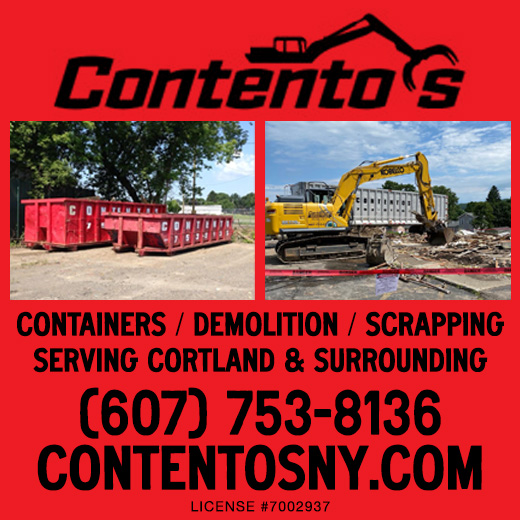Pencil Points – Residential Smoke & Carbon Monoxide Detectors
Posted by Dustin Horton // February 6, 2012 // Articles, Pencil Points
Pencil Points are tips for residential design and planning issues often encountered by homeowners, builders and developers. This information is provided by Applied Design Research Associates as general interest based on current NYS Building Codes and is not intended as professional guidance for any specific project. For answers to specific design questions feel free to contact ADRA at (607) 844-4601 or consult the yellow pages under Architects for the name of other registered design professionals in your area. You can also write or email ADRA with additional questions of interest to be researched and published in subsequent issues of this paper.
ADR Associates- P.O. Box 306, Freeville, NY 13068 adra@twcny.rr.com
Residential Smoke & Carbon Monoxide Detectors
Building requirements for residential smoke, heat and carbon monoxide detectors have evolved over many years. Prior to 1984, there was no uniform Building Construction and Fire Safety Code in New York State. Only after the tragic MGM Grand Hotel fire in Las Vegas and the Stouffer’s Inn fire in White Plains, NY just two weeks later in 1980 did State officials realize the importance of creating a comprehensive, statewide building code. Prior to that time, some municipalities had independent construction and fire safety codes while other communities had nothing. Smoke Detectors and alarm systems were absent in both fires resulting in the loss of 110 lives and injuries to more than 740 others. In 1984, New York introduced its first statewide Uniform Building and Fire Safety Code, which was subsequently updated over the years. In 2004, the State agreed to adopt the ICCC National Building code (with modifications) which is now systematically updated every three years.
Residential Smoke Detectors
In 1984 although there was no State code mandate, homeowners began to install battery operated, stand alone smoke detectors in their homes in response to local housing codes. The individual units were better than no protection, however, they relied on battery power and small alarm buzzers to alert occupants in an emergency. If the battery failed or was missing, and the walls were thick, occupants in adjacent rooms could not hear the alarm which limited the effectiveness of these units. The current national building code still acknowledges and approves the use of battery operated detectors in older buildings that have not undergone renovation upgrades. One recommendation is that smoke detector batteries be changed twice a year to coincide with resetting clocks during seasonal time adjustments.
In 2002, NYS Codes began to recommend that new homes be hardwired with interconnected smoke detection devices on a dedicated building circuit. Amanda’s Law passed in early 2010 mandating that carbon monoxide detectors be placed in all one and two family homes as well as motel/hotels, dormitories and apartment buildings where fuel burning heating systems or appliances were installed. Interconnected detectors send out an alarm signal to all detectors in the home. If a detector activates in the basement, each occupant in their bedroom would also hear the alarm and take steps to evacuate the building. Hardwired smoke detection systems are also required in older homes that undergo renovations and/or additions where reasonable access is available to upgrade the older systems. Current code requirements for smoke detection systems are:
- All residential systems shall comply with NFPA 72 and include audible alarms,
- Smoke detector/alarms shall be installed in all bedrooms and sleeping areas (including recreation rooms where guests may sleep), outside each sleeping area in the immediate vicinity such as a hallway, at least one on each story and basement of the dwelling, excluding non-habitable spaces such as attics and crawlspaces,
- Smoke detectors shall be placed on the ceiling or within 12” of the highest point of the ceiling when wall mounted but not less than 4” from the ridge or ceiling/wall interface, and not within 36” of an area subject to drafts such as HVAC registers or fans. Also detector locations should be at least 36” from a bathroom door, sauna, shower or similar space where high humidity is present,
- The detection system shall be connected to an uninterruptable power source (not switched), usually free form other equipment and appliances that could over load the circuit and trip a breaker.
- WHILE NOT A REQUIRMENT, the Architect also recommends placing detectors in areas of increased potential for a fire such as a mechanical heater room and near the kitchen. Kitchen areas will often be protected by a rate-of-rise or photo-electric detector in lieu of ionization smoke unit to minimize the frequency of false alarms due to smoke from normal cooking activities. Smoke detectors are not recommended for attics and unheated garages where temperatures can drop below 408F or exceed 1008F.
- Smoke detectors should be tested monthly and cleaned regularly (at least twice a year).
- NFPA 72 mandates that smoke detectors be replaced every ten years to maintain highest efficacy of the system.
Carbon Monoxide Detectors
Carbon Monoxide is a colorless, odorless gas created during combustion of fossil fuels such as wood, coal, natural gas and propane. Properly maintained cooking and heating equipment give off very little carbon monoxide within acceptable limits of human tolerance. Except when initially heated during partial combustion, carbon monoxide (CO) is approximately the same weight as oxygen (O²) and will freely mix with other air in a room until it dissipates therefore placement of the CO detector can be at the ceiling, near the floor, or at eye level where the CO gauge can be most easily read. Common symptoms of carbon monoxide poisoning include headaches, light-headedness, shortness of breath, mild nausea, and dizziness. Some also experience whitening of skin below the finger nails. Prolonged exposure can bring on flu-like symptoms and lead to death.
Beginning in 2000, insurance underwriters and codes experts began to issue warnings about carbon monoxide exposure in residential dwellings followed shortly thereafter by retailers who offered battery type and plug-in carbon monoxide detectors. Carbon Monoxide detection standards first appeared in the 2007 NYS Residential Code (R313.4) with the following requirements:
- Carbon Monoxide detection/alarm units are to be tested with audible alarms distinct and separate from the smoke detection system per UL 2034 and NFPA 720,
- CO detection units shall be installed in each dwelling unit that contains solid-fuel heating equipment and any dwelling unit that has an attached garage,
- CO detectors shall be interconnected and hardwired to an uninterruptable power source, except where stand alone CO detectors were previously approved,
- CO detectors shall be installed on each level of a dwelling containing sleeping areas within 10 feet of those sleeping areas. Also, install CO units where solid-fuel heating equipment is located but NOT adjacent to the fuel source so as to minimize the potential for false alarms.
- CO detection units are to be replaced every 5-6 years or sooner in accordance with detector manufacturer’s instructions
The 2010 NYS Residential Code and Amanda’s Law currently require that all combination smoke/CO detectors be interconnected and hardwired to an uninterruptable power source with battery back-up, except where stand alone detectors were previously approved. CO alarms shall have a distinct and different audible sound than the smoke detection alarm.
















